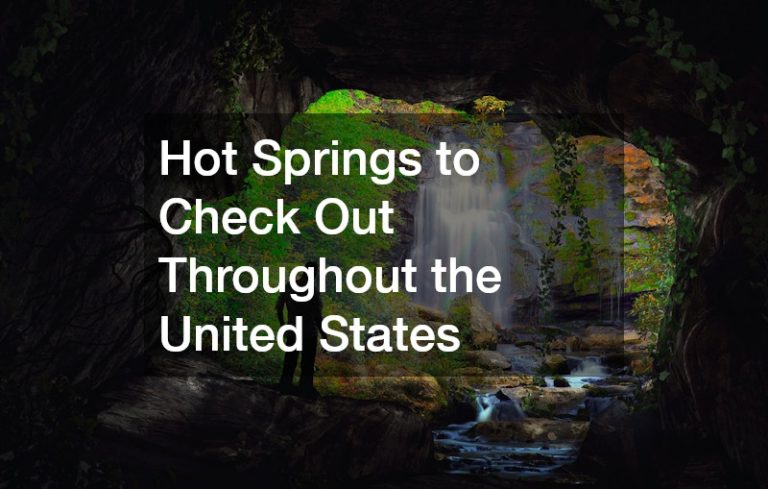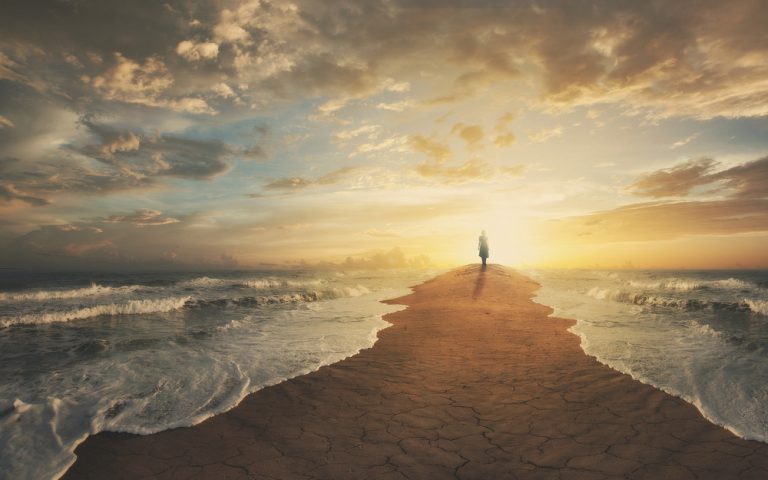Iceland, often called the land of fire and ice , is a destination equally diverse and captivating in its beauty as its weather patterns. This Nordic wonderland’s geographical wonders and enchanting wildlife are a sight to behold year-round.
But when is the best time to go to Iceland? That largely depends on what you want to see and do. This guide delves into the different seasons, exploring their unique characteristics to help you determine the optimal time to visit Iceland.
What are Iceland’s Seasons and Weather Like?
Iceland experiences four distinct seasons , each offering its unique charm and adventures.
- Winter: The winter season in Iceland spans from December to March. During this time, temperatures plummet to around 30F (-1C), and daylight becomes a precious luxury. Precipitation frequently occurs in the form of hail, sleet, and snow. The entire landscape is enveloped in a serene blanket of snow and ice throughout the winter. Discover the enchanting beauty of Iceland’s winter wonderland!
- Spring: March heralds the arrival of spring, a season that lingers until June. The snow cover gradually melts during this time, unveiling the re-emerging earth beneath. Daylight extends its reach, bringing warmth to the weather and bidding farewell to the chilly winds. As spring unfurls, it also marks the conclusion of the Northern Lights season.
- Summer: Iceland’s summer is from June to September. The days remain cool during this time, with temperatures ranging from 40F (5C) up to 58F (15C). However, they are remarkably long and occasionally blessed by gentle rains and drizzles. As the snow and ice recede, vibrant lupines emerge, adorning the green landscapes with their blossoms.
- Fall: Fall, spanning from September to December, is a season of transition. It brings mild temperatures ranging from 30F (0C) to 50F (10C), accompanied by frequent rainfall and a crisp, cool breeze. As the days grow shorter, the rain gradually gives way to snowfall and frost, painting a picturesque scene of the changing season.
Climate in Iceland

The Gulf Stream bestows warmth upon the typically polar temperatures, resulting in a cold-temperate climate in Iceland. Situated in the Northern Hemisphere, just south of the Arctic Pole, Iceland resides at the border of the temperate and polar climate zones.
Iceland’s climate varies throughout the year, with distinct weather patterns characterizing each season. The air is crisp during spring, and the daylight hours are normal. Summer brings the enchantment of the midnight sun and a lingering coolness in the air. Fall showcases overcast skies and damp weather. As for winter, it is characterized by blustery winds, snowfall, and shorter daylight hours.
Why Should You Visit Iceland in the Summer?
Summer in Iceland, from June through September, presents a unique opportunity to explore this Nordic nation in its full splendor and enjoy extended daylight hours due to the phenomenon known as the ” Midnight Sun .” This extended daylight allows ample time to traverse the country’s fascinating landscapes, making it an excellent time for road trips, hiking, or camping.
During this period, Iceland’s nature is at its most vibrant. The snow and ice give way to lush green landscapes dotted with wildflowers, making this the perfect time for nature lovers and photographers. You will see a range of wildlife, including various seabirds like puffins, that are a treat to observe.
Moreover, summer also hosts a variety of cultural and music festivals, providing an insight into the local traditions and customs. While the Northern Lights may be less visible, the sense of endless daylight, milder temperatures, and the exuberance of flora and fauna make summer a wonderful time to visit Iceland.
Is Winter the Best Time to Chase the Northern Lights?

Winter is indeed the best time to chase the Northern Lights in Iceland. From late September to mid-April, the country experiences extended hours of darkness, providing the perfect backdrop for this magical light show. During these months, the skies are often clear, greatly enhancing your chances of witnessing the Aurora Borealis.
The Northern Lights, or the Aurora Borealis, are one of Earth’s most spectacular natural phenomena. They result from charged particles that enter Earth’s atmosphere from the sun. These charged particles collide with gaseous particles. This collision paints the night sky with mesmerizing green, pink, yellow, blue, and violet hues.
Viewing conditions are optimal in winter due to the long, dark nights. The less artificial and natural light present, the more vivid the display will be. By venturing out of the city and into more rural areas, you can ensure minimal light pollution and increase your chances of catching this extraordinary spectacle.
However, it’s important to note that the appearance of the Northern Lights is unpredictable and depends heavily on solar activity and weather conditions. It’s recommended to check the forecast and plan your trip accordingly to maximize your chances of a sighting. Despite the colder temperatures, if chasing the Northern Lights is on your bucket list, winter is ideal for visiting Iceland.
What Makes Spring Special for Exploring Iceland?
Springtime in Iceland marks the transition from the icy grip of winter to the refreshing warmth of summer. From March to June, spring is a season of rapid change in the country’s landscapes and ecosystems. The snow cover starts to recede, revealing the earth beneath it, teeming with life waiting to resurface.
One of the most magical aspects of spring in Iceland is the re-emergence of wildlife, particularly birds. The country becomes a haven for migratory birds, including the iconic puffin. Birdwatchers will particularly enjoy this time for its unique birdwatching opportunities.
Moreover, spring is also the tail-end of the Northern Lights season. If you’re lucky, you might catch a glimpse of this mesmerizing phenomenon in the early days of spring. The days gradually get longer, but nights are still long and dark enough for the Aurora Borealis to light up the skies.
Spring also sees the return of more accessible hiking and outdoor exploration. With the snowpack melting, many trails become accessible again, allowing hikers and nature lovers to explore the highlands of Iceland, which remain off-limits during the harsh winter months.
Furthermore, spring is considered the shoulder season in Iceland’s tourism industry, meaning fewer tourists and lower prices. This makes spring an ideal time for visitors looking for a quieter and more affordable experience.
Finally, spring in Iceland brings a sense of renewal and optimism. As the country thaws out from the harsh winter, the landscapes burst with new life and color. From cascading waterfalls to blooming wildflowers, spring is a time that showcases Iceland’s natural beauty uniquely and vibrantly.
How About Autumn? Why It’s a Beautiful Time to Explore?
Why is Autumn a Beautiful Time to Explore Iceland?

Autumn, stretching from September to December, is a transformative phase in Iceland, presenting a captivating blend of the country’s summer greenery and winter’s snowy charm. It’s a time of year when you can experience the natural beauty of Iceland, adorned with a palette of vibrant hues. The landscapes come alive in crimson, orange, and gold, offering a spectacular sight for visitors and photographers alike.
Iceland’s autumnal weather is relatively mild, enabling comfortable exploration of the country’s attractions. While the days gradually get shorter, there’s ample daylight to enjoy outdoor activities such as hiking, horseback riding, or exploring the national parks.
Autumn is also a time when you can witness one of the most phenomenal natural occurrences – the return of the Northern Lights. As the nights get longer, the chances of catching a mesmerizing display of the Aurora Borealis increase, making it a prime time for this enchanting spectacle.
Moreover, fall is the season of the Icelandic sheep roundup, known as Réttir. This traditional event is a unique cultural experience where farmers gather their free-roaming sheep from the highlands, often celebrated with music and dance. Participating in Réttir offers a rare insight into Iceland’s rural life and traditions.
Despite being a transitional season, autumn presents an extraordinary opportunity to enjoy vibrant landscapes and fascinating cultural experiences. With fewer tourists around, you can relish the beauty and tranquility of Iceland in a more serene setting. Thus, autumn becomes a beautifully balanced time to explore the myriad wonders of Iceland.
Avoiding the Crowds While Enjoying Pleasant Weather in Autumn
Autumn in Iceland has the advantage of comfortably cool weather and fewer tourist crowds, making it an ideal season for visitors who prefer a peaceful, intimate exploring experience. Mid-September to early October, in particular, offer a sweet spot with typically stable weather and the summer tourist influx tapering off.
If you want to avoid the crowds, consider starting your day early and visiting popular attractions like the Golden Circle, Blue Lagoon, or Skógafoss waterfall in the morning. With daylight hours becoming shorter, it’s also a perfect opportunity to relish the sunrises, which happen later in the day, and the breathtaking sunsets that Iceland is famous for.
Another effective way to dodge the crowds is to explore off-the-beaten-path destinations. Iceland’s vast landscapes offer an abundance of less crowded but equally stunning attractions. For instance, the tranquil Westfjords, Snæfellsnes Peninsula’s rugged beauty, and the isolated East fjords are perfect for those seeking solitude and communion with nature.
However, always watch the weather forecast as conditions change rapidly, especially in autumn. This will ensure you have a safe and enjoyable exploration of Iceland during the beautiful autumn season.
What activities can you enjoy in each season?
Iceland offers a plethora of activities that can be enjoyed throughout the different seasons:
- Winter (December to March): Winter in Iceland is a magical time, primarily if you are keen on witnessing the dazzling Northern Lights. It’s the best time for snow-based activities such as snowmobiling, winter hiking, and ice-caving. You can also explore the crystal ice caves in Vatnajökull National Park, dip in the geothermal hot springs, or embark on a winter whale-watching tour.
- Spring (March to June): As the snow melts away, spring marks the beginning of the hiking season in Iceland. It’s a great time to explore the famous Golden Circle route and witness the beauty of waterfalls like Gullfoss and Seljalandsfoss. Birdwatchers can spot various migratory birds, including puffins, at spots like the Westman Islands.
- Summer (June to September): With long daylight hours, summer is ideal for outdoor adventures. You can enjoy hiking in the highlands, exploring the lava fields, or witnessing the midnight sun. It’s also the perfect time for road trips around the Ring Road and for attending local music and cultural festivals.
- Fall (September to December): Autumn is ideal for enjoying the vivid fall colors in Thingvellir National Park or riding horseback through the stunning landscapes. It’s also the beginning of the Northern Lights season, so don’t miss out on an Aurora Borealis tour. Participating in the traditional sheep roundup, Réttir is another unique experience.
Remember to pack according to the season and activity you plan to do. No matter when you visit, every season in Iceland brings its unique charm, providing countless opportunities to create unforgettable memories.
Planning your visit: Tips for each season
Here are some tips to consider for each season when visiting Iceland.
- Winter Tips: Winter in Iceland is a season of contrast and beauty. Pack warm clothing, including a heavy coat, gloves, hats, scarves, and thermal socks. Waterproof boots are a must for snowy conditions. Consider renting a 4×4 vehicle for driving, as roads can be icy. Monitor weather forecasts and road conditions regularly, as weather can change rapidly.
- Spring Tips: During spring, the weather is highly variable. Layered clothing is advisable with a top waterproof layer. The trails may still have snow or mud, so waterproof hiking shoes are recommended. The days are getting longer, but check sunset times to avoid getting caught in the dark.
- Summer Tips: Summer is the warmest season, but temperatures are still relatively cool. Pack layers, including a light jacket or sweater for the evenings. Don’t forget sunscreen, as the sun is out most day and night. Always have a rain jacket handy due to unpredictable showers.
- Fall Tips: Autumn weather can be unpredictable, so layering is key. Include a warm jacket, as temperatures can drop, especially in the evenings. Waterproof shoes are a good idea as it often rains during this season. As with other seasons, keep an eye on the weather forecast and plan according to the conditions.
Remember, no matter what season you choose to visit, Iceland has plenty to offer. You can make the most of your Icelandic adventure with the right planning and preparation for each season.
What to Pack and Recommended Clothing
What to Pack and Recommended Clothing
Iceland’s weather is notoriously variable, so layering is the key to packing clothing. Opt for thermal base layers, a fleece or wool middle layer for insulation, and a waterproof and windproof outer layer. Unlike cotton, wool or synthetic materials are highly recommended as they retain heat even when wet.
- Outerwear: A good quality, waterproof and windproof jacket is essential. Make sure it’s breathable for outdoor activities.
- Mid Layer: Woolen sweaters or fleece jackets are ideal for creating a warm insulating layer.
- Base Layer: Thermal clothing from synthetic materials or merino wool can help retain body heat.
- Footwear: Waterproof hiking boots are a must for any season. In winter, opt for insulated boots.
- Accessories: Remember warm gloves, scarves, thermal socks, and a hat or beanie to protect against the cold. A good pair of sunglasses is also essential, especially in winter when snow can create a lot of glare.
Essential Items
Apart from clothing, here are a few items you should consider packing:
- Swimwear: A visit to Iceland is only complete with a dip in one of the country’s many geothermal pools or hot springs. So, remember to pack your swimsuit!
- Sunscreen: The sun in Iceland, especially in summer during the long days, can be stronger than expected. Bring high-SPF sunscreen to protect your skin.
- Reusable Water Bottle: The tap water in Iceland is some of the cleanest in the world. Bring a reusable water bottle to stay hydrated and help reduce plastic waste.
- Camera: With its majestic landscapes, Iceland is a photographer’s dream. Don’t forget your camera; pack additional batteries or chargers.
- Power Adaptor: Iceland uses European-style plug sockets (type F), so make sure to have a suitable adaptor for charging your devices.
Remember that packing should be adapted according to the time of year and the activities you plan to undertake. With the right preparation, you’ll be well-equipped to enjoy all the natural beauty and adventure Iceland offers.
Are there any festivals and events to consider?
Iceland’s vibrant cultural life is punctuated with various festivals and events catering to a wide range of interests. Here are some of the notable ones:
- Reykjavik Arts Festival (May-June) : This is a multidisciplinary festival that features a broad array of arts, including music, visual art, dance, and theater, with participants from around the globe.
- Secret Solstice Festival (June) : This unique music festival is held during the summer solstice, featuring 72 hours of continuous daylight. It boasts a diverse lineup of local and international artists across various genres.
- Viking Festival (June) : Held in Hafnarfjörður, this festival offers a glimpse into Viking culture and history through reenactments, traditional games, crafts, and a Viking-style market.
- Icelandic National Day (June 17) : This public holiday is celebrated with parades, dances, and traditional Icelandic music to commemorate the country’s independence.
- Reykjavik Pride (August) : One of the biggest events in Iceland’s calendar, Reykjavik Pride is a vibrant, colorful celebration of the LGBTQ+ community.
- Reykjavik International Film Festival (September-October) : This festival screens a wide range of dramas and non-fiction films from over 40 countries, with a special focus on up-and-coming filmmakers.
- Iceland Airwaves (November) : A renowned music festival showcasing new Icelandic and international music.
Knowing about and participating in these events can make your visit to Iceland even more memorable. It’s recommended to check the dates and details in advance as they can change from year to year.
Conclusion
In conclusion, there’s no definitive ‘best’ time to visit Iceland – it depends on your interests, tolerance for variable weather, and desire for daylight hours. If witnessing the mesmerizing Northern Lights is your primary goal, winter and fall are your best bet. For bountiful daylight and more favorable weather, consider the summer months. Spring offers a beautiful transition period to experience the best of both worlds. With its vibrant colors and cultural highlights like Réttir, Autumn presents a unique blend of experiences. With careful planning, appropriate packing, and an understanding of what each season has to offer, your trip to Iceland can be a memorable adventure no matter when you decide to go.
FAQs
Here are some frequently asked questions if you plan to visit Iceland.
What month is best to see the northern lights in Iceland?
The northern lights are most visible from September to April, with the best chances of seeing them between late October and early March. However, conditions play a role in visibility, so it’s best to monitor the forecast before planning your trip.
What is the cheapest month to visit Iceland?
The cheapest time to visit Iceland is typically during the off-season, from October to April. However, expect lower temperatures and fewer daylight hours.
What are the best and worst months to go to Iceland?
The best months to visit Iceland are June, July, and August. The weather is typically warmer, making it an ideal time for outdoor activities. Due to shorter daylight hours and colder temperatures, December to March is the worst time to go.
Is Iceland an expensive place to visit?
Iceland is one of the most expensive places to visit in Europe. To save on costs, consider visiting during the off-season (October to April). Also, take advantage of free activities like hikes and sightseeing.
Is it worth it to go to Iceland?
Despite its high cost of living, Iceland is an amazing place to explore and offers varied experiences throughout the year. From colorful autumn scenery to witnessing the northern lights in winter, it’s worth every penny.










